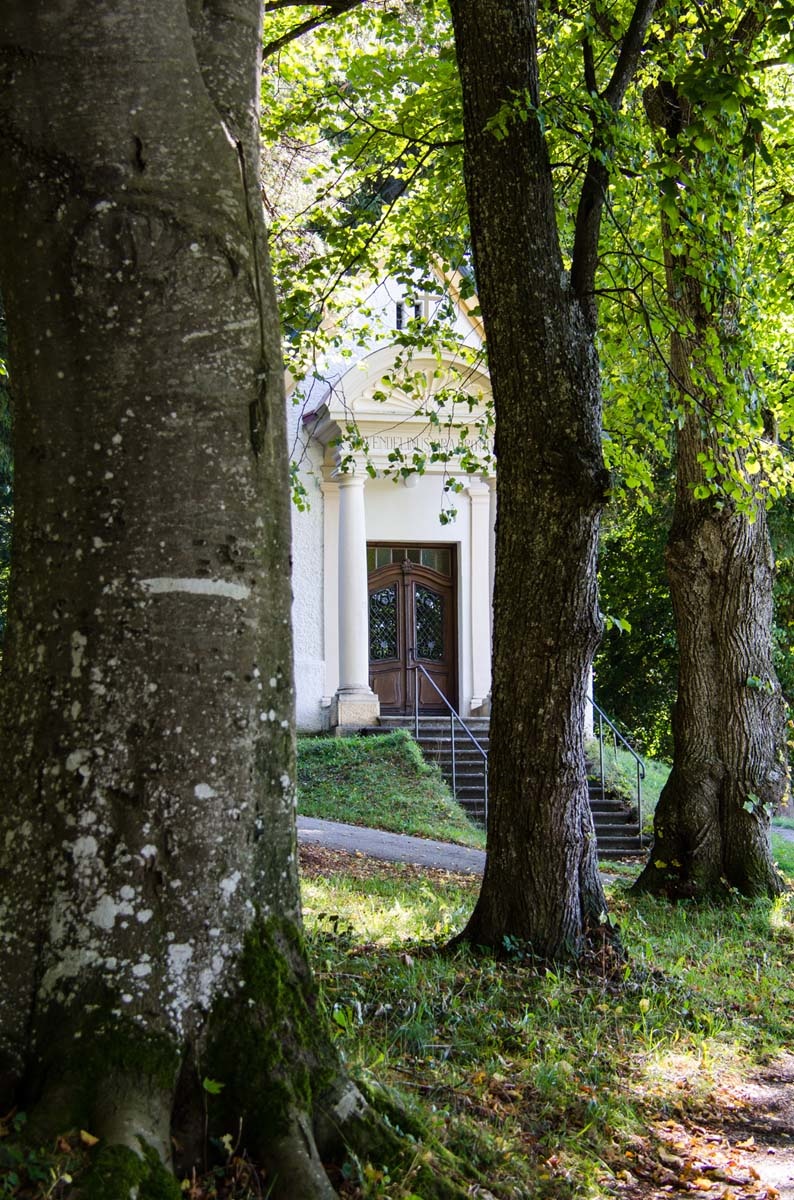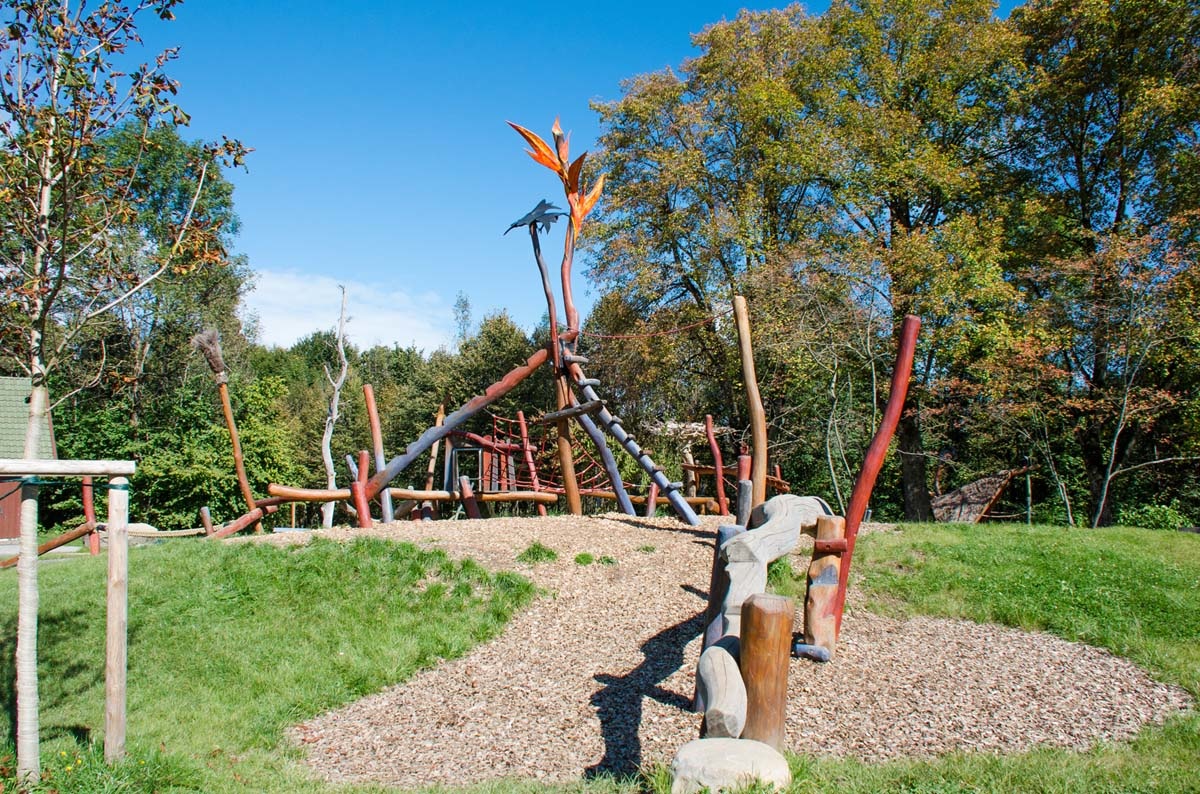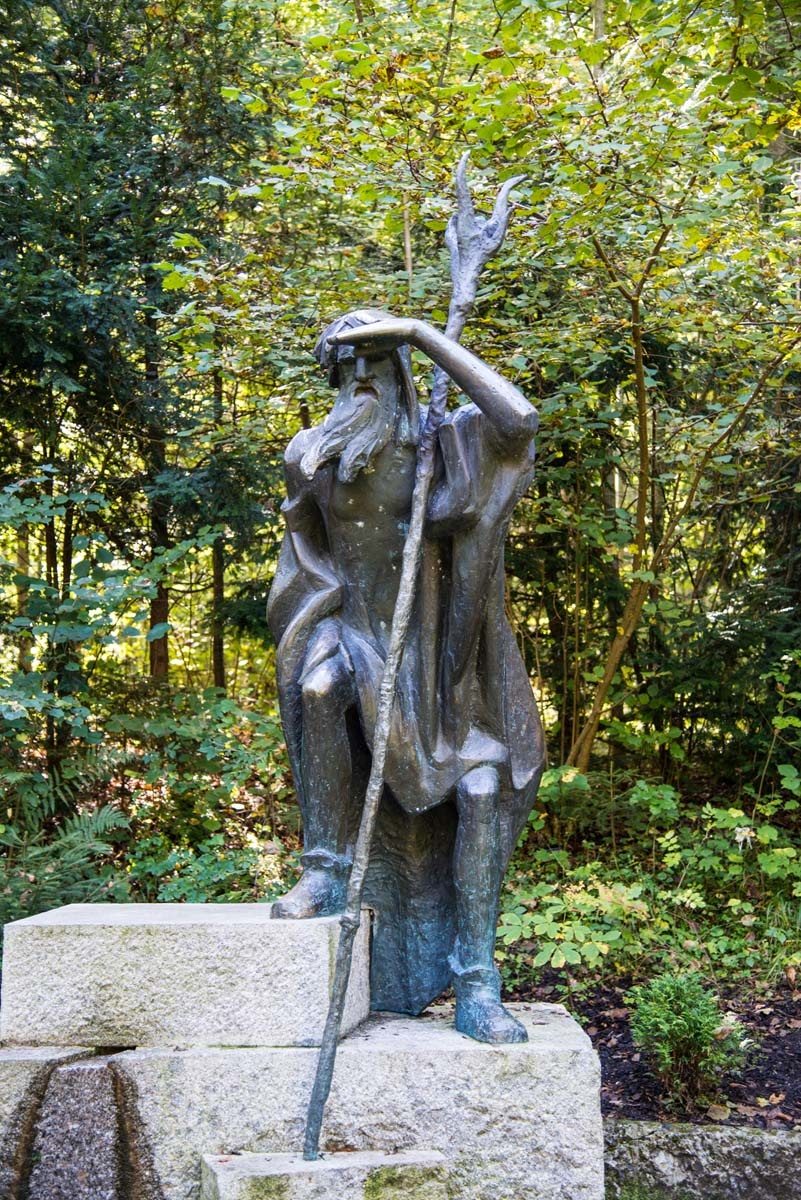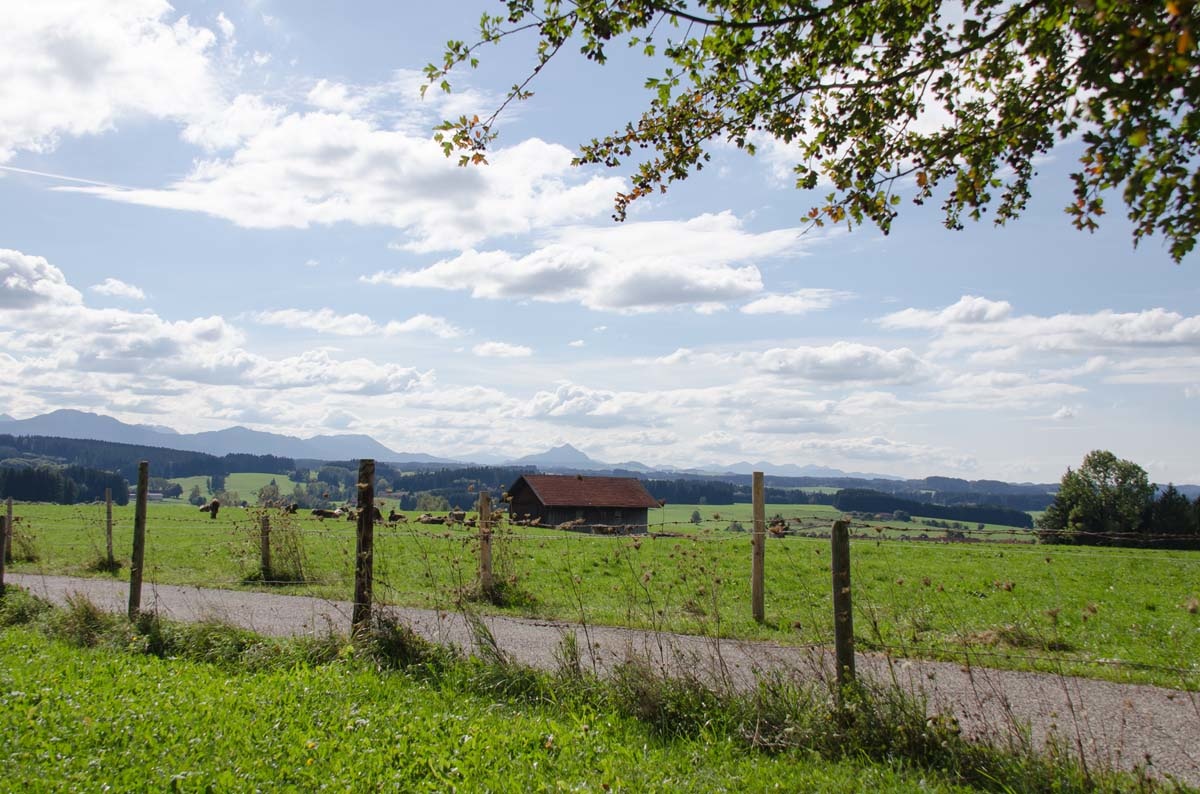Buchel
There lies a friendly dragon stretched between the Schlossberg and the Kuhstallweiher with the belly full of water and plated with strong green scales. With its strong back it holds protection and shields the City of Marktoberdorf. It is called Buchel.
What was once community fields and recreational forests is now the green heart of the city. In many ways the old moraine of an ice-age glacier is something special. Just a hump, sure, but an especially beautiful one, a major one, an animated one. For the locals the Buchel is a special piece of spiritual home. Full of memories, full of ideas. There is no other place where the woods are growing right in the centre of a city. There is no other place with a park upstairs. With spiry trails for joggers and walkers. During summer and winter: the Buchel offers a unique view into the Alps. A few steps from the pedestrian zone, you can stand above the city and above all matters.
Located a bit too far south for a Celtic fort. No signs for a roman street to the Auerberg even through there is a roman villa at the Kuhstallweiher incl. a roman spa. Dr. Michael Petzet, former expert of cultural heritage and head of the Bavarian authorities for monument preservations has brought up the idea of being a former city-wall.
The name does not derive from the fruit of the Rot-“Buche”, but rather from the word “Buckel” – the old word in german for elevation or dome. Trees have been planted in 1892 for the first time. Before that, it was used for cattle. During the middle-ages people in need were allowed to farm on this place with up to one “Metzen” (app. 2.000m²). This might be one reason, why the Buchel is still such an important point of identification in the mind of the locals.
In 1889 the rail tracks to Füssen were finished. King Ludwig II travelled through Marktoberdorf while heading for Schwangau. His uncle Luitpold was popular as prince regent of Bavaria until 1912. On his 70th birthday in 1891, the Buchel was renamed into Luit-pold-hills with great celebrations, and concerts. But the name never really established.
In 1890 the Buchel was planned to be transformed into a “Kings place”, with a 300m dandering court and a view to the elector’s castle. The Café Belvedere and the lookout remained “utopia”. Instead an event-playground was built. From 1923 on, the gymnastics club played football on the Buchel. The scores were documented in the bark of the trees and can still be found today. The wooden snake with 100 years of age remains as a relic from this time. Today a net of well-kept paths is covering the Buchel, with shady and sunny spots, with children’s playgrounds and football areas as well as the St. Wendelins chapel, established in the 18th century. St Wendelin as Saint of all cattle was needed in the realm of cows and calfes until the Buchel was transformed in 1889 into a sixteen hectare recreational park.
In the west, Rübezahl has its realm, his monument as the familiar spirit of the giant mountains. He arrived in the Ostallgäu with the expellees after the Second World War and together they became fellow citizens a long time ago.
The Engellandeplatz (angel’s airfield) is destination for school excursions, paradisiac place for pic-nicks and rendezvous, established by sculptor Christoph Wank. On Foehn-weather-days, the mountains become nearly touchable. On New Year’s Eve, the people of Marktoberdorf meet here on their Buchel to celebrate and clink glasses, while watching the fireworks.




